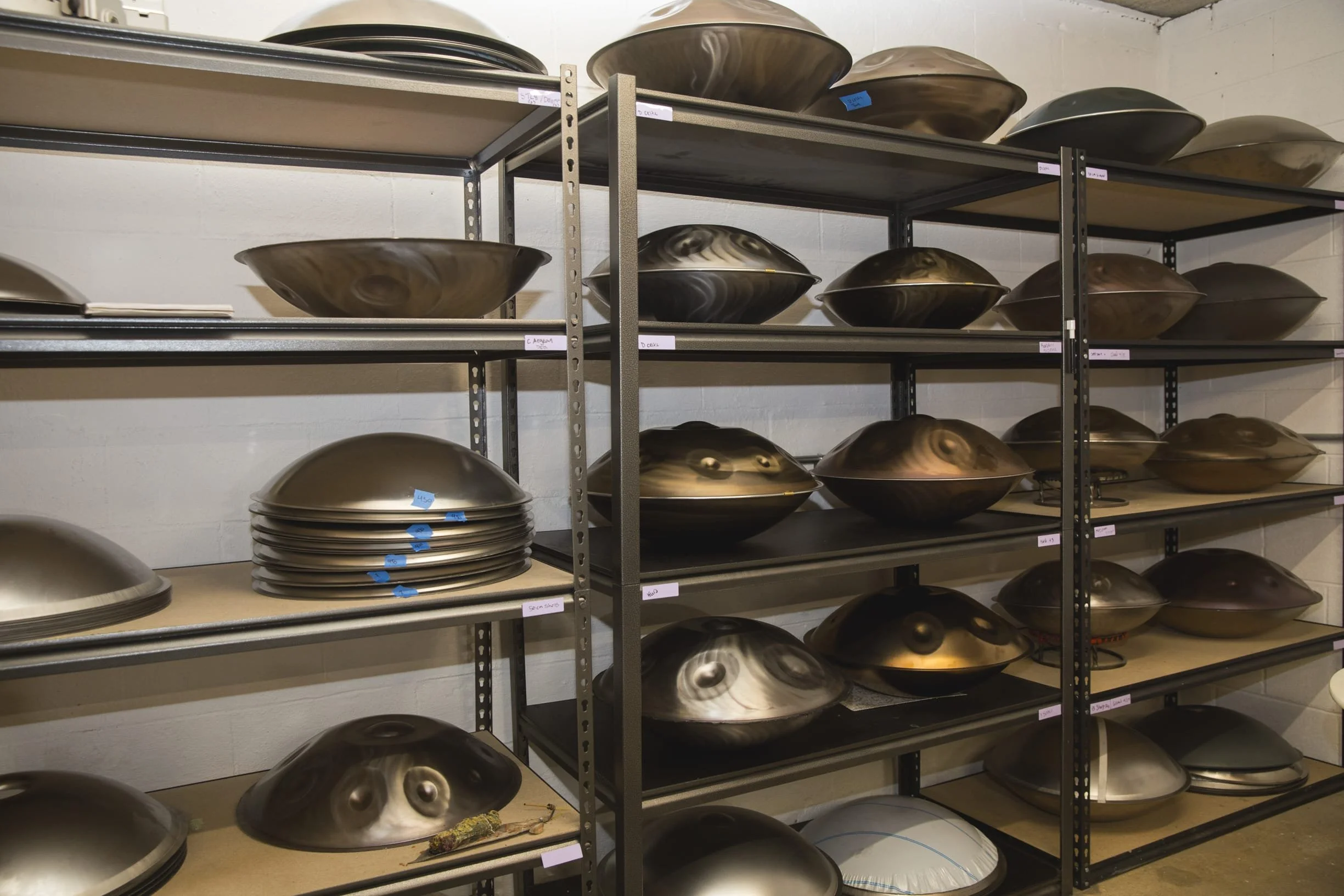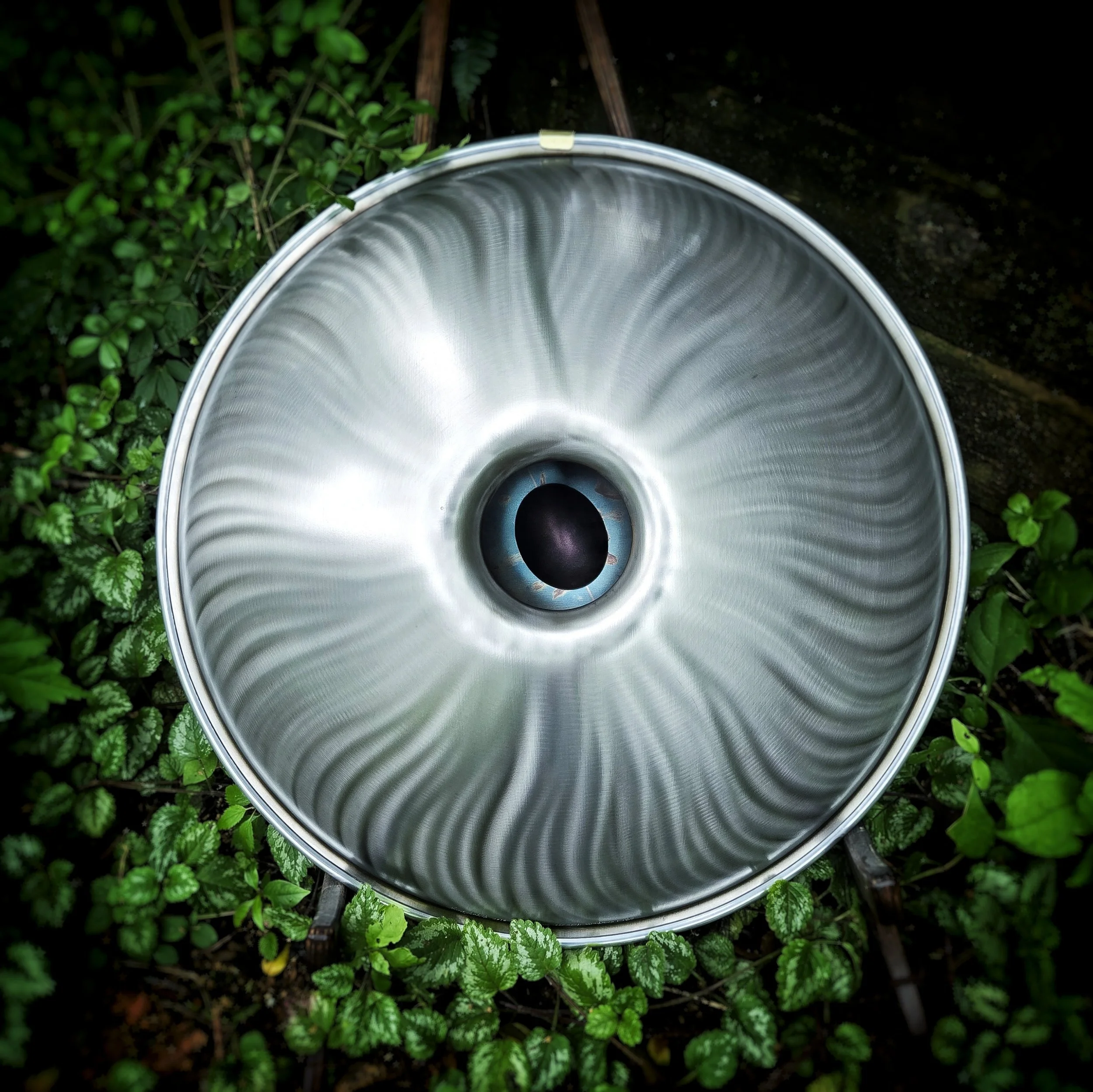Handpan Anatomy
Understanding the anatomy of handpans can help you communicate with other players more easily, play yours more effectively, and build a better handpan.
General Anatomy
Handpans all share the same anatomy. Every handpan is made up of two shells:
The top shell is where most of the playing is done. It is where most of the notes are hammered in
The bottom shell contains a hole called a “port”. The bottom shell is most often played when bottom notes are hammered in
Where the two shells are glued together, you have the rim.
Composition of Top Shell
Standard top shells may contain 7 notes plus an 8th center for mini handpans and 8 notes plus a 9th center note for medium and standard handpans.
The center note determines the technical key (see Handpan Scales for more info). The center tone always sticks out in a shape known as the “apex”. This apex is an ellipse or shaped like an oval.
Around every note is the tone field. This tone field is a flat surface which can be played
Around every note and tone field is the note border. These note borders can also be played
The remaining surface is known as the shoulder. The shoulder also produces notes that are less resonant
The ring of notes around the center note are known as the note circle. The center of each note in the circle are dimpled and are known as “impex”. The impex are circular in shape
A handpan becomes a mutant when extra notes are added between the center note and the outer tone circle
Composition of Bottom Shell
The bottom shell may or may not contain extra notes. These are shaped the same was as the note circle for the top shell.
At the center of the bottom shell is a large hole known as the port. The port allows the sound sound resonating inside the handpan to escape and vibrate beautifull
The ring around the port may be tuned?
Inside the port is the neck. This is the cylindrical shape produces a particular sound known as “Helmholtz resonance” or “wind throb”. This is the sound of air moving in and out of a cavity.





